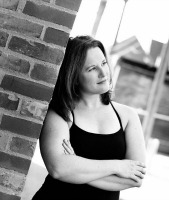Earlier this year, Maryland University of Integrative Health (MUIH) held our second annual Research Symposium to highlight the University’s research and scholarship. The center-piece of the event was a poster session displaying research from members of the MUIH community.
Kimberly Searl, M.S., a 2017 yoga therapy graduate, presented a case report on the potential benefits of yoga therapy for youth with high functioning autism. Her report was recently accepted by the International Association of Yoga Therapists to be presented at this year’s annual Symposium on Yoga Research. We recently interviewed Kimberly about her report, and the role yoga therapy could play for individuals with autism spectrum disorder (ASD).
Congratulations on your acceptance to this year’s Symposium on Yoga Research. Tell me a little more about your design, and why you believe this treatment option needs to be explored.
Autism is costing the U.S. $90 billion annually, and from 2004 to 2016 the number of ASD diagnoses has doubled. Yoga therapy may be a cost effective treatment option that can be done at home, and may help people with ASD to develop and strengthen their self-regulation, or coping skills, with little to no adverse effects.My hypothesis is that, since we haven’t found autism in the brain or DNA, perhaps some answers could be found in the nervous system. I am looking specifically at the vagus nerve and strengthening vagal tone, or how the nerve responds to stress. The vagus nerve is the longest cranial nerve in the body, and is part of the involuntary nervous system that controls unconscious body processes such as heart rate and digestion.
You developed this case report while completing your Master of Science in Yoga Therapy at MUIH. What kind of support and resources did you access to complete this project?
The support of MUIH faculty has been priceless and has greatly contributed to my advance in this work. They held my hand and walked me through every step of the process since doing research is a new skill for me. I will be eternally grateful for the gifts they have shared with me so that I can continue to learn and develop as a researcher. They also offered feedback in my poster design and in my abstract development, which has pushed me into growing the research on a larger level. I was given guidance in my case study where I tested this design before I implemented it on a large scale, and received advice on the emotional scale chart that I’m developing.
Do you have plans on executing this design, or is this intended for other researchers to execute?
 |
I do have plans to execute this design. I first tested this design on a smaller scale to see what I may need to change. I’ll attach that research to a full case report and send it to the International Journal of Yoga Therapy. MUIH faculty is again guiding me through this process. I learned a lot from the test and am presently making some changes such as software tracking for vagal tone variations, and I moved my intervention design slightly. This design is scheduled to be implemented in summer 2018 to twelve youth with high functioning ASD in Monroe, MI at my fitness studio, Mind Body Balance, LLC.
How will a study like this support the field of yoga therapy? And how will it contribute to the expansion of treatment options for children on the autism spectrum?
My work could serve as a useful stepping stone in the iterative process of yoga research for ASD. After a student with ASD leaves school there aren’t really a lot of services to support them as adults, and unfortunately they do not always have access to a caregiver. Yoga therapy tools may help with self-regulation, can be cost-effective, and done at home with little to no adverse effects. It may also allow them to find a mindful community with which to interact safely, physically, and emotionally if they eventually grow accustomed to practicing in a yoga studio.
Is there anything else you’d like to add?
I could talk for hours on yoga therapy and ASD. I’m honored to be doing this work and to have MUIH faculty believe in me and offer their countless gifts in order to help me accomplish this project.
Kimberly Searl, M.S. is a 2017 graduate of Maryland University of Integrative Health (MUIH), in Laurel, Maryland. She is an Integrative Sustainable Movement Educator and the owner of the Mind Body Balance LLC, a Therapeutic Studio specializing in integrative sustainable movement treatment plans designed specifically for her clients’ individual needs. See for more information visit mindbodybalance.com.
MUIH offers a master’s of science degree in yoga therapy and a yoga therapy clinic. To learn more, visit muih.edu.
To read Kimberly’s research poster, click here.